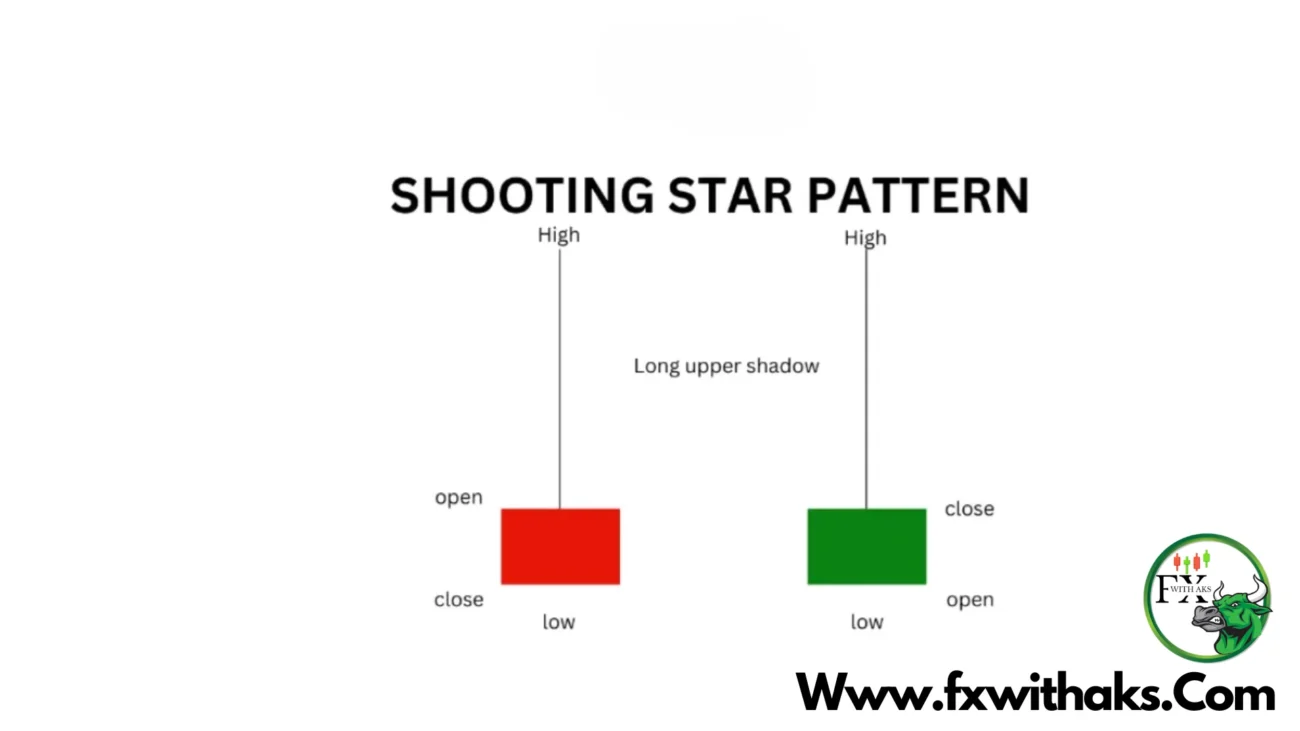The Shooting Star candlestick is a bearish reversal pattern, often spotted at the top of an uptrend. It tells you the bulls tried to push prices higher — but failed — and the bears took over by the end of the session.
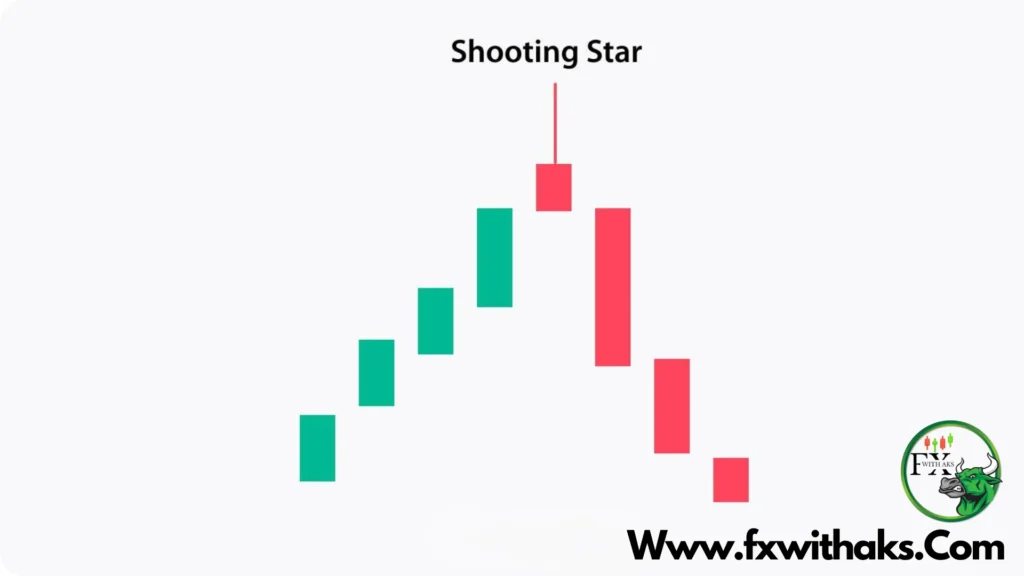
🌠 What is a Shooting Star Candle?
📌 Characteristics:
- Small real body near the bottom of the candle.
- Long upper shadow (at least 2x the body size).
- Little to no lower shadow.
- Appears after an uptrend.
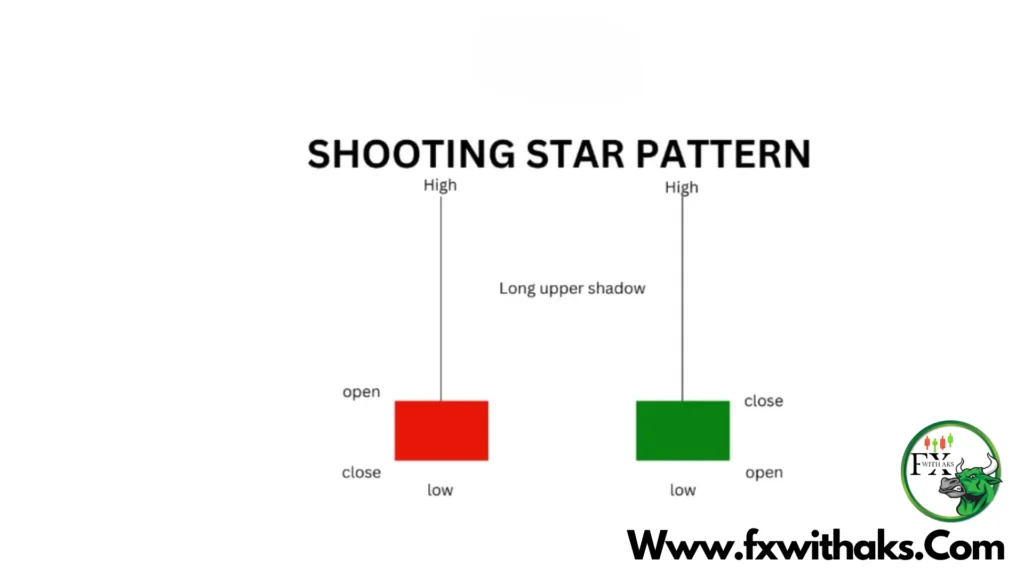
🔍 Visual:
|
|
█
(The vertical line is the upper wick, and the small block is the real body.)
🧠 What It Means:
- Buyers pushed the price way up during the session.
- Sellers stepped in and drove it back down near the open.
- Signals weakening bullish momentum and a possible bearish reversal.
✅ How to Trade the Shooting Star Candle
Step 1: Identify the Pattern
- Make sure it appears after an uptrend.
- Long upper wick = failed rally.
- Small body at the bottom = seller pressure.
Step 2: Wait for Confirmation
- Don’t enter just based on the Shooting Star.
- Wait for the next candle to be bearish and close below the Shooting Star’s body.
Step 3: Enter the Trade
- Enter a short (sell) trade after the confirmation candle closes.
- Or enter on a break below the Shooting Star’s low.
Step 4: Set Stop-Loss
- Place stop-loss above the high of the Shooting Star.
- Gives space in case of a retest or fakeout.
Step 5: Set Take-Profit
- Use previous support levels or a risk/reward ratio (e.g., 2:1).
- You can also use indicators like Fibonacci retracement or moving averages.
🧠 Pro Tips:
- Stronger signal if:
- It appears near resistance.
- It’s followed by high-volume bearish candle.
- Confirmed with RSI divergence or overbought conditions.
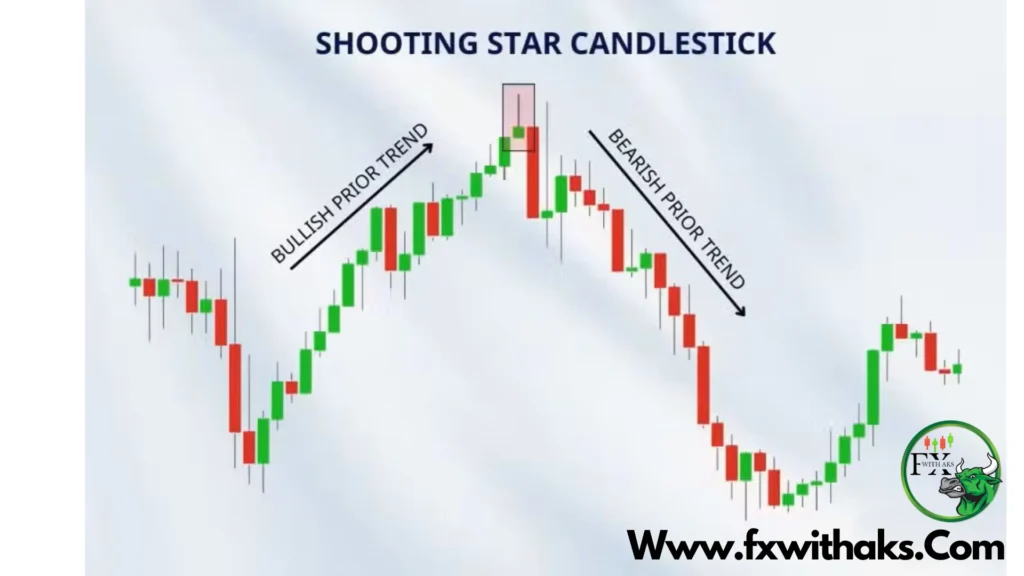
Trading with a Shooting Star candlestick is a classic way to catch trend reversals at the top of an uptrend. Here’s a simple, actionable guide to help you trade it with confidence:
🌠 How to Trade with the Shooting Star Candlestick
🔍 Step 1: Spot the Pattern
- Occurs after an uptrend.
- Has a small real body near the bottom, with a long upper wick (at least 2x the body).
- Shows buyers tried to push higher, but sellers rejected the move.
✅ Step 2: Wait for Confirmation
Never trade the Shooting Star alone — wait for confirmation:
- Look for the next candle to be bearish (red), and ideally close below the Shooting Star’s body.
- This confirms sellers are gaining control.
🎯 Step 3: Enter the Trade
- Conservative entry: Enter a short position after a bearish confirmation candle closes.
- Aggressive entry: Enter when price breaks below the Shooting Star’s low.
🛡️ Step 4: Set Your Stop-Loss
- Place your stop-loss just above the high of the Shooting Star.
- This gives room in case of a minor retest.
💰 Step 5: Set Your Take-Profit
Use one of the following methods:
- Previous support or demand zones.
- Fibonacci retracement levels (e.g., 38.2%, 50%, 61.8%).
- A risk-to-reward ratio like 2:1 or 3:1 (e.g., risk 1% to gain 2–3%).
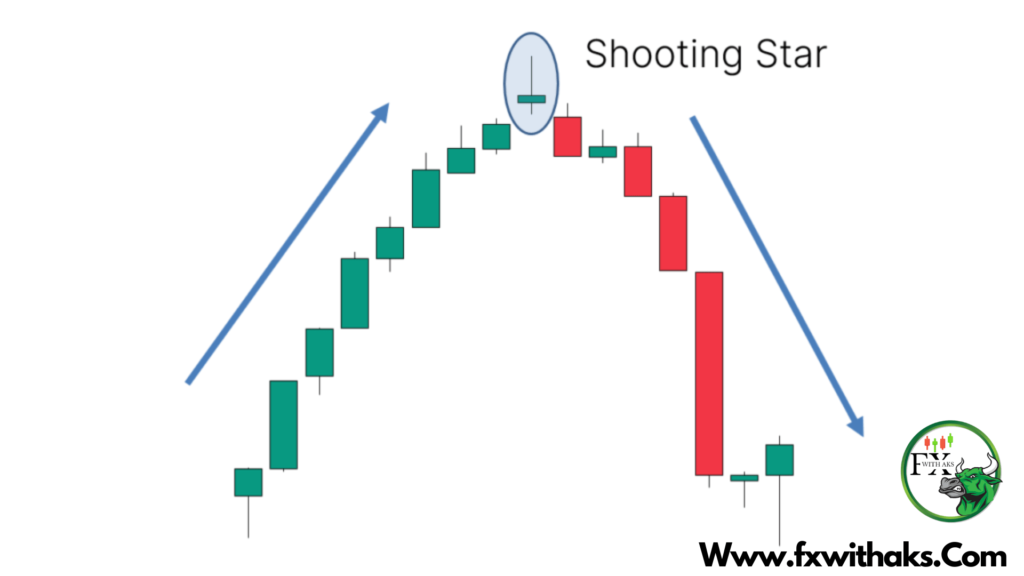
📊 Example Trade Setup
| Element | Description |
|---|---|
| Pattern | Shooting Star after an uptrend |
| Entry | Break below Shooting Star low |
| Stop-Loss | Above Shooting Star high |
| Take-Profit | Next support level / 2:1 R:R ratio |
| Timeframe | Daily or H4 (for stronger signals) |
🔑 Pro Tips
- Stronger signal if:
- Appears at key resistance or trendline.
- Comes with high volume.
- Confirmed with indicators like RSI (overbought) or MACD crossover.
Would you like a visual example, chart markup, or a printable one-page guide?

